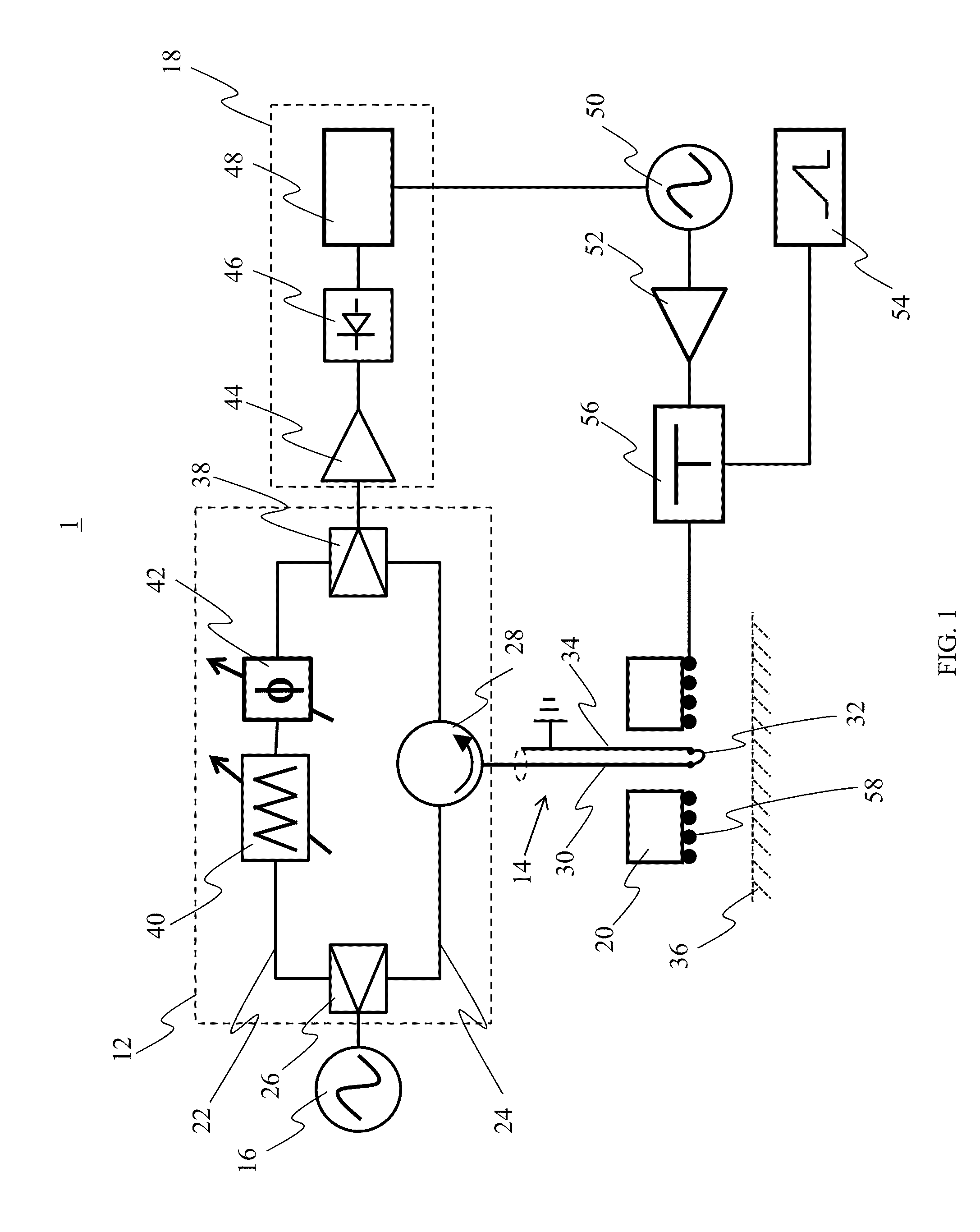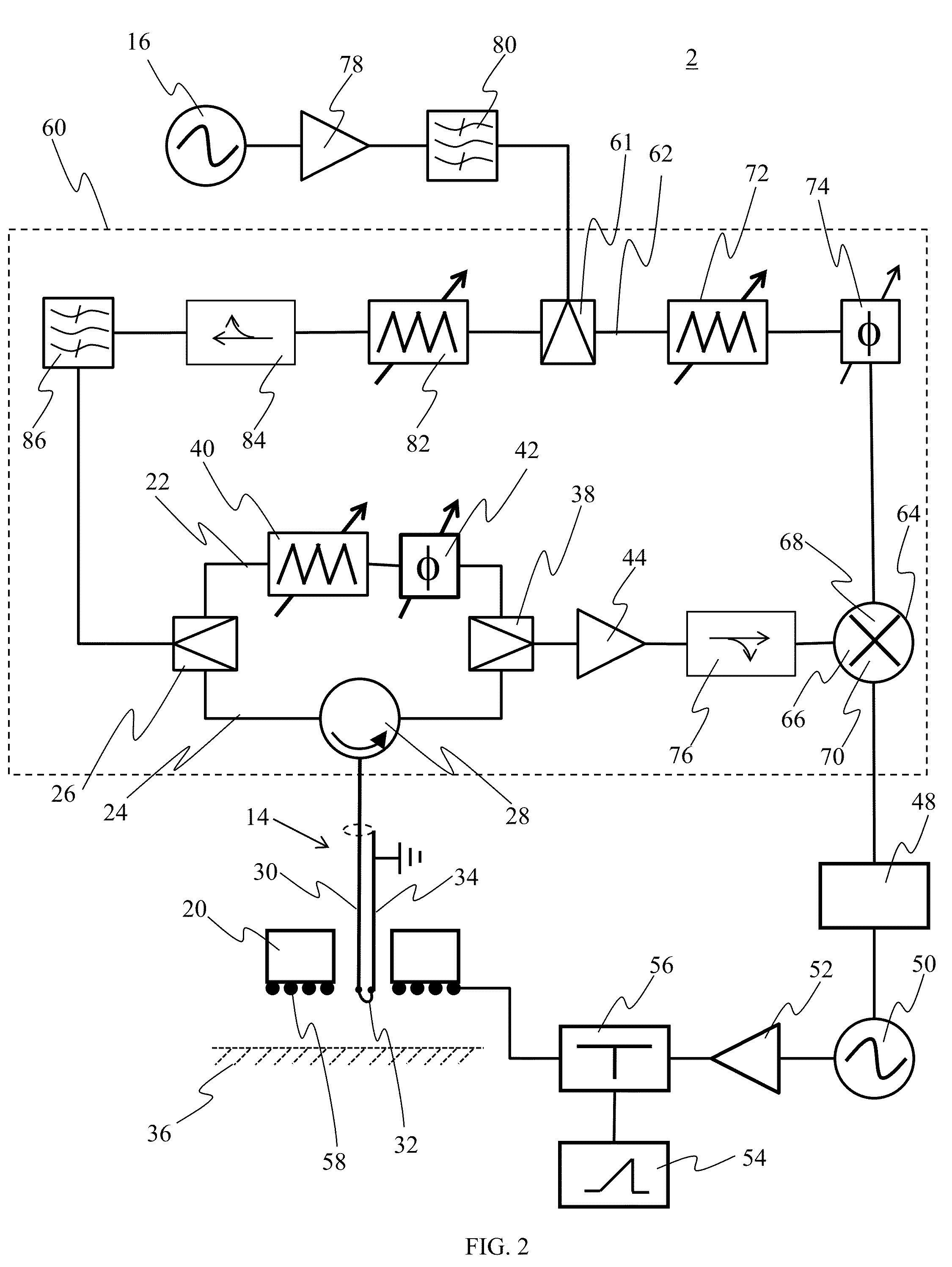Electron spin resonance spectrometer and method for using same
- Summary
- Abstract
- Description
- Claims
- Application Information
AI Technical Summary
Benefits of technology
Problems solved by technology
Method used
Image
Examples
example 1
Solid State Electron Spin Resonance Spectrum
[0084]A 7 microgram (μg) solid sample of methyltriphenyl-arsonium tetracyanoquinodimethane (methyltriphenyl-arsonium TCNQ) in crystalline form was disposed 1 nm from a probe tip of an electron spin resonance spectrometer. The sample was held at room temperature and ambient pressure and subjected to an excitation frequency of 8.845 GHz at a power of 2.5 mW at the tip of the probe. The excitation frequency had a full width at half-maximum (FWHM) bandwidth of 150 Hz centered about 8.845 GHz. The magnetic field strength was scanned 35 mT while being modulated at a reference frequency of 100 kHz at a modulation amplitude of approximately 3 G. A lock-in amplifier referenced to the reference frequency detected absorption by the sample. A resulting electron spin resonance (ESR) spectrum of the sample is shown in FIG. 19. The signal-to-noise ratio is extremely high, and no broadening is noticeable in the spectrum.
example 2
ESR Spectra as a Function of Excitation Frequency
[0085]A sample of 2,2-diphenyl-1-picrylhydrazyl (DPPH) was prepared in the same manner as the methyltriphenyl-arsonium TCNQ in Example 1. ESR spectra of the DPPH sample were acquired under substantially similar conditions as in Example 1, but the excitation frequency was set to 9.12 GHz, 9.02 GHz, or 8.92 GHz. The ESR spectrum at each excitation frequency is shown in FIG. 20. The zero-crossing point for each spectrum shifts to a different magnetic field strength as predicted by the Zeeman effect.
example 3
Scanning Probe ESR Spectra
[0086]ESR spectra for the sample of Example 1 were acquired under identical conditions as in Example 1 except the sample was positioned with respect to the probe tip using a sample stage 230 (see FIG. 21) that had independent x-, y-, and z-positioning selectivity. The center of the sample was defined as the origin, i.e., (x, y, z)=(0, 0, 0). The sample 214 was moved with respect to the probe tip 208 by adjusting the sample stage 230. At each new position of the sample 214, an ESR spectrum was acquired, and the peak absorption was monitored as a function of position of the sample 214. For movement of the sample along the x-, y-, and z-coordinates (see inset of FIG. 21 for Cartesian coordinate system), normalized absorption versus position respectively is shown in FIGS. 22, 23, and 24. As expected, the normalized intensity decreases from the center of the sample (coordinate of about (0, 0, 0)).
PUM
 Login to View More
Login to View More Abstract
Description
Claims
Application Information
 Login to View More
Login to View More - R&D
- Intellectual Property
- Life Sciences
- Materials
- Tech Scout
- Unparalleled Data Quality
- Higher Quality Content
- 60% Fewer Hallucinations
Browse by: Latest US Patents, China's latest patents, Technical Efficacy Thesaurus, Application Domain, Technology Topic, Popular Technical Reports.
© 2025 PatSnap. All rights reserved.Legal|Privacy policy|Modern Slavery Act Transparency Statement|Sitemap|About US| Contact US: help@patsnap.com



